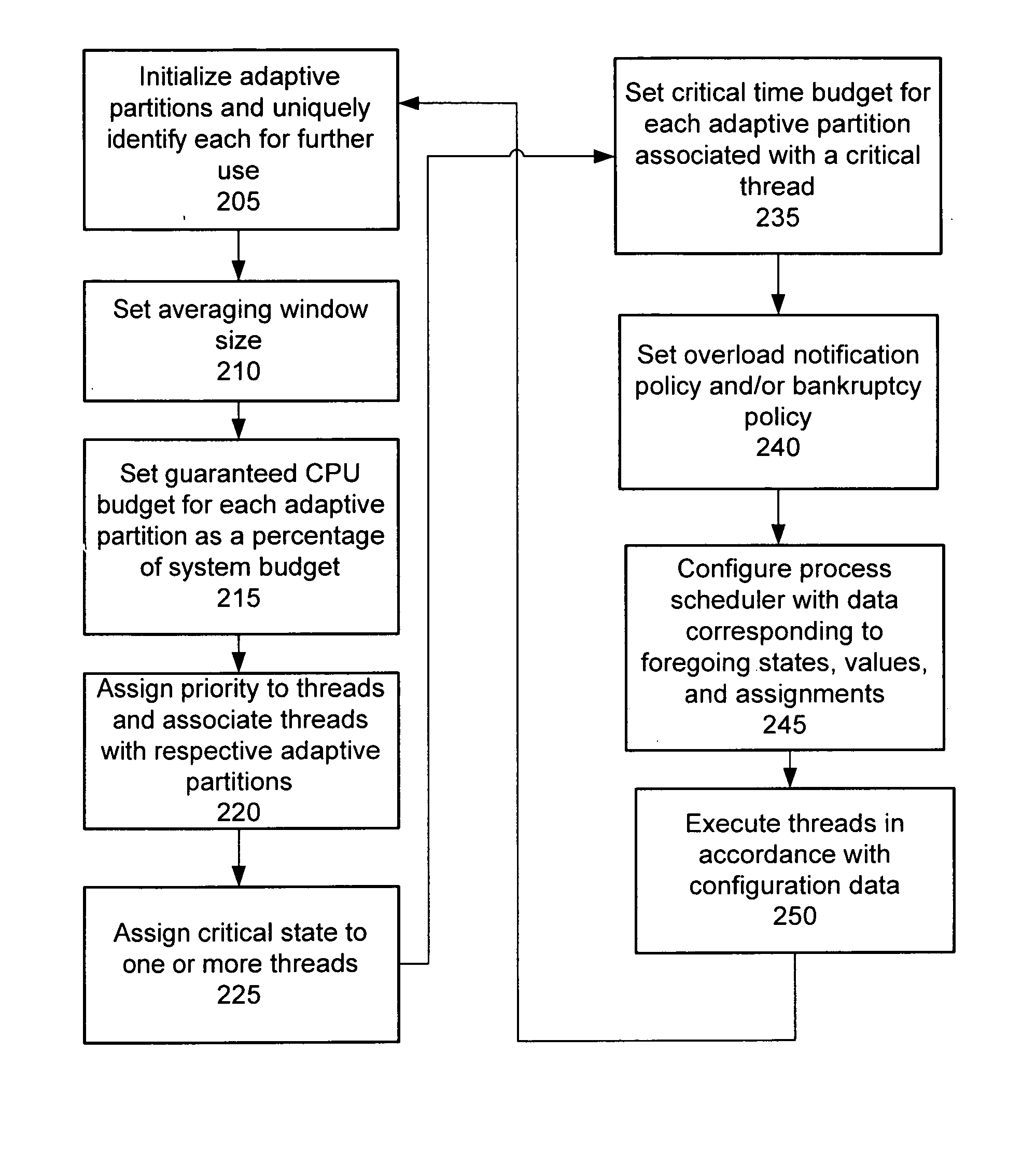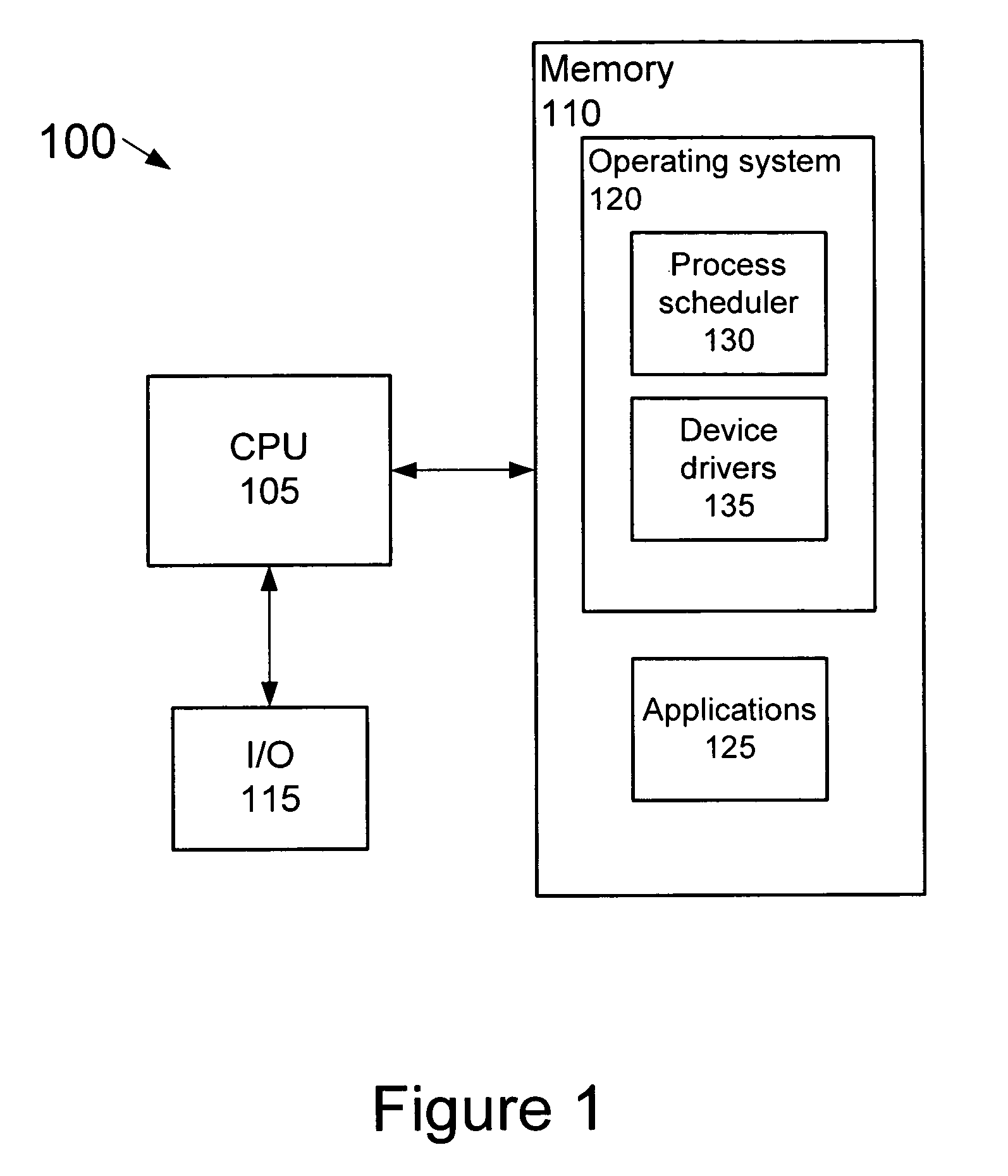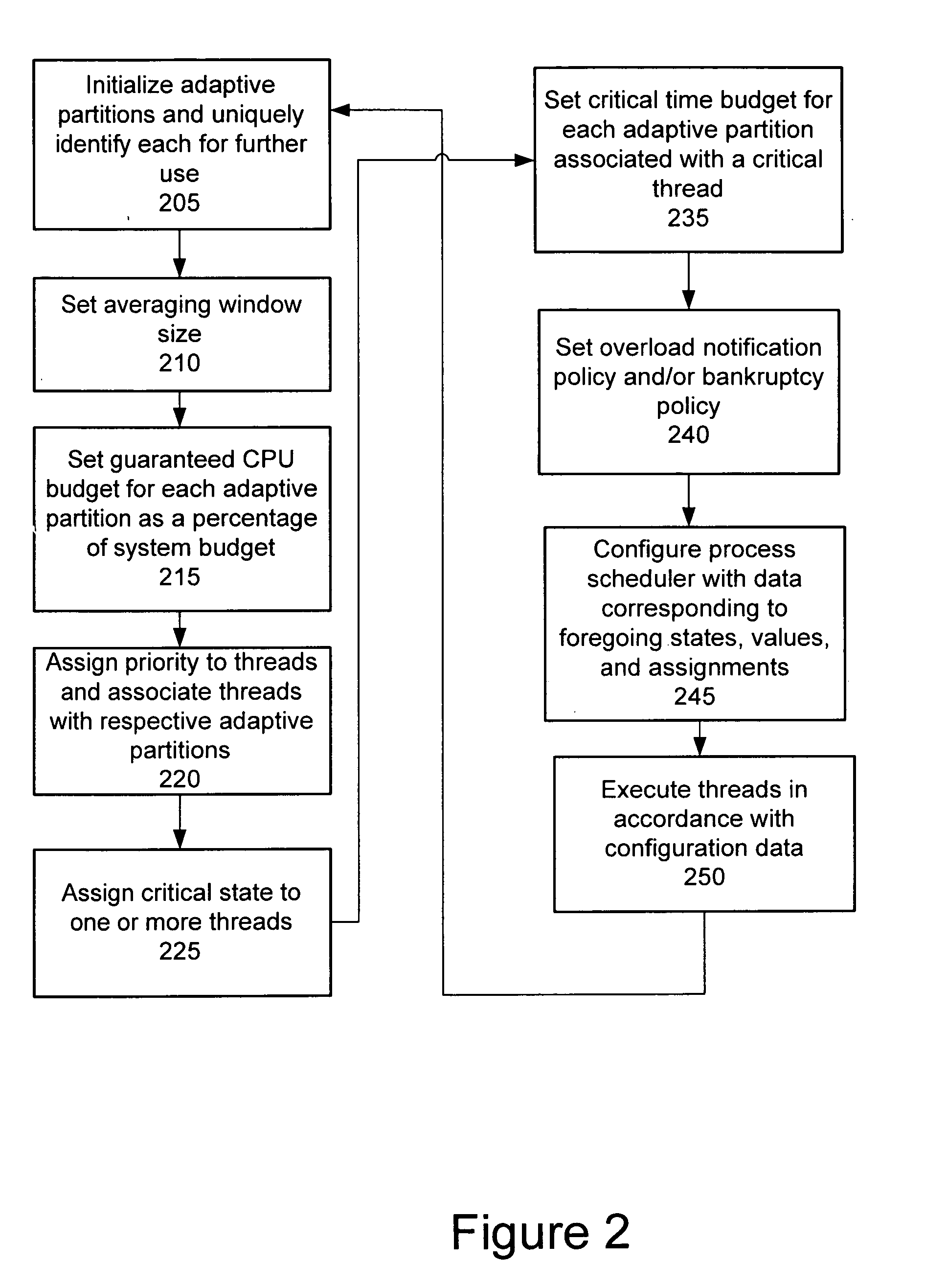Process scheduler employing adaptive partitioning of process threads
a process scheduler and process thread technology, applied in the field of operating systems having adaptive partition scheduling for process threads, can solve the problems of affecting the proper scheduling of low-priority threads, and affecting the use of low-priority threads
- Summary
- Abstract
- Description
- Claims
- Application Information
AI Technical Summary
Problems solved by technology
Method used
Image
Examples
Embodiment Construction
[0029]FIG. 1 is a schematic block diagram of a system 100 that may execute a process scheduler employing an adaptive partitioning of process threads. System 100 includes a central processing unit 105 (“CPU”) that may access software code stored in memory 110. CPU 105 also may be disposed to access various devices / system components through an I / O interface 115. The devices / system components may include, for example, sensors, human interface devices, network nodes, printers, storage devices, or the like. The processors in a symmetric multiprocessing system, regardless of the number, may be considered in the same manner as a single processor and are likewise included in the scope of the representation by block 105.
[0030] Memory 110 may be used to store, among other things, the software code that defines the functions that are to be executed by the system 100. Although memory 110 is shown as a single unit, it may be implemented as multiple memory units of the same or different memory t...
PUM
 Login to View More
Login to View More Abstract
Description
Claims
Application Information
 Login to View More
Login to View More - R&D
- Intellectual Property
- Life Sciences
- Materials
- Tech Scout
- Unparalleled Data Quality
- Higher Quality Content
- 60% Fewer Hallucinations
Browse by: Latest US Patents, China's latest patents, Technical Efficacy Thesaurus, Application Domain, Technology Topic, Popular Technical Reports.
© 2025 PatSnap. All rights reserved.Legal|Privacy policy|Modern Slavery Act Transparency Statement|Sitemap|About US| Contact US: help@patsnap.com



